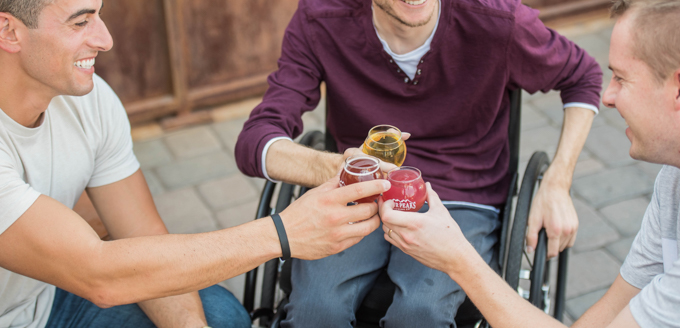
Researching Accessible Neighborhoods
When researching accessible neighborhoods in Austin, Texas, it can be overwhelming to figure out which areas are best suited for seniors and people with disabilities. Fortunately, there are a few key steps that can help make the process easier and ensure that you find the best neighborhood for you or your loved one.
The first step is to research the location and amenities available in the various neighborhoods. Look for neighborhoods with access to public transportation, parks and recreation, grocery stores, and medical facilities. Additionally, research the accessibility of the sidewalks and streets in the area. Are there curb cuts, crosswalks, and ramps for wheelchairs? Are buildings and sidewalks well lit for nighttime navigation? Are there accessible parking spots?
The second step is to find out what type of assisted living or housing options are available in each neighborhood. Are there apartments or homes that offer accessibility features such as ramps, elevators, and wide doorways? Are there accessible public transportation options such as buses, trains, and taxi services? Some neighborhoods may even have special transportation services for seniors and people with disabilities.
The third step is to talk to current residents of the neighborhood. Ask them about their experiences living in the area and if they have any advice or recommendations. You can also ask about any organizations or initiatives that they know of that aim to make the neighborhood more accessible.
Finally, check out online resources that provide reviews and ratings of the various neighborhoods in Austin. These resources can give you an idea of the overall accessibility of the neighborhood and provide more information about the amenities and services available.
Researching accessible neighborhoods in Austin can be a daunting task. However, by taking the necessary steps and utilizing the available resources, you can find a neighborhood that works for you or your loved one. With the right research and guidance, you can find an accessible neighborhood that meets all of your needs and offers a safe, secure, and enjoyable living experience.
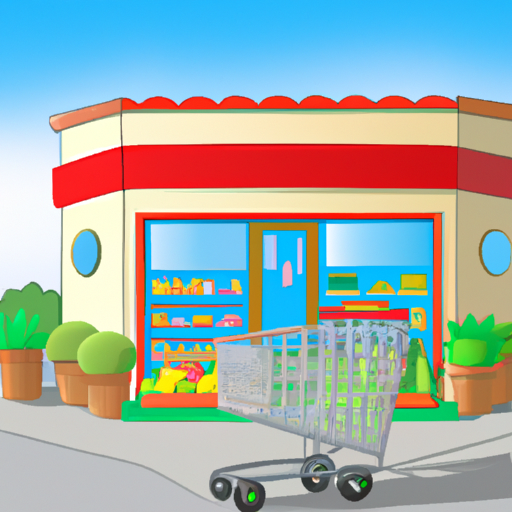
The Benefits of an Accessible Neighborhood
When it comes to finding the perfect neighborhood for seniors and people with disabilities, accessibility is key. Accessible neighborhoods in Austin offer a world of benefits to their residents, making life easier and more enjoyable. From easy access to transportation, healthcare, and shopping, to a safe and supportive community, accessible neighborhoods make life easier for those with mobility issues and provide a sense of security and stability.
One of the most significant benefits of living in an accessible neighborhood is the variety of transportation options available. For seniors and people with disabilities who may not be able to drive, having access to public transportation and door-to-door rideshare services can make a huge difference. With a variety of transportation options, residents can easily get around town without having to worry about the cost or availability of transportation.
In addition to transportation, accessible neighborhoods offer a wealth of healthcare options. From large hospitals and medical centers to smaller, local clinics, the abundance of healthcare options makes it easier for seniors and people with disabilities to receive medical attention and care. With a wide selection of healthcare providers, residents can find the perfect doctor for their needs and ensure they always have access to the medical attention they need.
Shopping is also a major benefit of living in an accessible neighborhood. With stores and restaurants within walking distance, seniors and people with disabilities can easily access the products and services they need. From grocery stores to clothing stores to restaurants, having a variety of shopping options within easy reach makes life easier for those with mobility issues.
Finally, accessible neighborhoods provide a safe and supportive community. With an abundance of amenities, parks, and activities, seniors and people with disabilities can connect with their neighbors and find a sense of belonging and comfort in their neighborhood. From organized activities to social clubs, accessible neighborhoods provide a variety of ways for residents to engage with their community and enjoy the benefits of being part of a larger, supportive network.
When it comes to finding the perfect neighborhood for seniors and people with disabilities, Austin has a wide range of accessible neighborhoods to choose from. With easy access to transportation, healthcare, and shopping, to a safe and supportive community, accessible neighborhoods make life easier for those with mobility issues and provide a sense of security and stability. With all these benefits, living in an accessible neighborhood is the perfect choice for seniors and people with disabilities.

A Look at Accessibility in Austin’s Neighborhoods
When it comes to finding the best place to live for seniors and people with disabilities, it is important to consider how accessible the neighborhood is. In Austin, Texas, there are many neighborhoods that offer a range of accessibility features. From lift-equipped buses to ramps and elevators, Austin provides a variety of accessibility options for those with special needs.
The city of Austin is committed to providing a safe and accessible environment for all residents. The city’s Transportation Department has an entire office dedicated to accessible transportation services, including lift-equipped buses and wheelchair-accessible vans. The city also has an Accessibility Advisory Committee, which provides guidance on accessibility policies and projects.
One of the most accessible neighborhoods in Austin is Hyde Park. This neighborhood is known for its wide sidewalks and ramps, making it easy for people with disabilities to navigate the area. The city has also installed curb cuts at many of the intersections, allowing wheelchair users to safely cross the street. Furthermore, the neighborhood has several wheelchair-accessible public parks, making it easier for those with mobility issues to enjoy the outdoors.
The East Riverside-Oltorf neighborhood is another great option for those with special needs. This area includes a number of accessibility features, including accessible public transportation and a variety of ramps and elevators. Furthermore, the neighborhood has a number of wheelchair-accessible restaurants and stores, making it easier for those with disabilities to enjoy the local amenities.
The downtown area of Austin is also very accessible. This neighborhood offers a variety of lifts and ramps for those with mobility issues, as well as wheelchair-accessible buses and shuttles. Furthermore, the area has a number of wheelchair-accessible restaurants and stores, making it easier for those with special needs to enjoy the local amenities.
The Mueller neighborhood is another great option for those with special needs. This area is known for its wide sidewalks and ramps, making it easy for people with disabilities to navigate the area. The neighborhood also has several wheelchair-accessible parks, making it easier for those with mobility issues to enjoy the outdoors. Furthermore, the area has a number of wheelchair-accessible restaurants and stores, making it easier for those with special needs to enjoy the local amenities.
Overall, Austin is a great place to live for those with special needs. The city has a wide range of accessibility features, making it easy for those with disabilities to get around. Furthermore, the city has a number of neighborhoods that offer a variety of wheelchair-accessible amenities, making it easier for those with special needs to enjoy the city. Whether you’re a senior or someone with a disability, Austin has a number of neighborhoods to choose from that are sure to meet your accessibility needs.
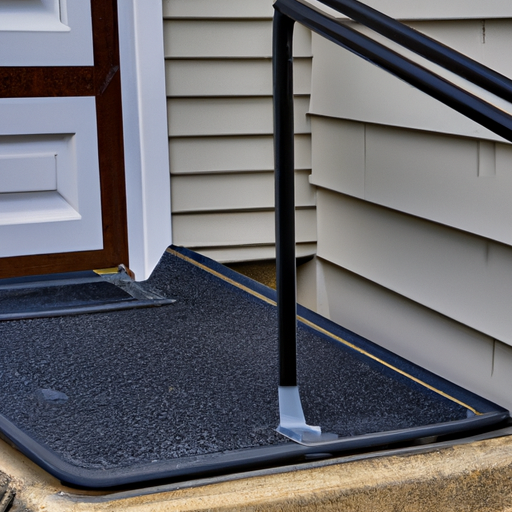
Factors to Consider When Choosing an Accessible Neighborhood
When it comes to finding an accessible neighborhood in Austin, there are several factors to consider. For seniors and people with disabilities, having access to the right amenities and services can make all the difference in their quality of life.
When selecting an accessible neighborhood, the first thing to consider is the availability of public transportation. Having easy access to public transportation can make it easier to get to places like the grocery store, doctor’s office, and other places of interest. Public transportation can also be helpful for those who have difficulty driving or who live in areas not serviced by public transportation.
Another factor to consider is the availability of sidewalks and other pedestrian-friendly infrastructure. Having sidewalks, bike lanes, and other walkable pathways makes it easier to get around and can make a huge difference for those with mobility impairments. In addition, it’s important to look for neighborhoods that have wheelchair-accessible ramps and elevators, as well as other accessibility features.
It’s also important to consider the availability of parks, recreation centers, and other outdoor spaces. This can be especially beneficial for seniors who may need access to outdoor spaces for exercise and leisure activities. Look for parks and recreation centers that are easily accessible and have plenty of open space.
In addition, take into account the availability of grocery stores, medical offices, and other services. Having easy access to these can make life much more convenient and can help seniors and people with disabilities save time and money.
Finally, consider the safety of the neighborhood. Look for neighborhoods that have a low crime rate and that have plenty of reliable security. If the neighborhood is close to a university or college campus, look for those that have well-lit pathways and that are patrolled by campus security.
When it comes to finding an accessible neighborhood in Austin, there are plenty of factors to consider. Taking the time to research the available amenities and services can help ensure that seniors and people with disabilities have access to everything they need to lead a comfortable and fulfilling life.
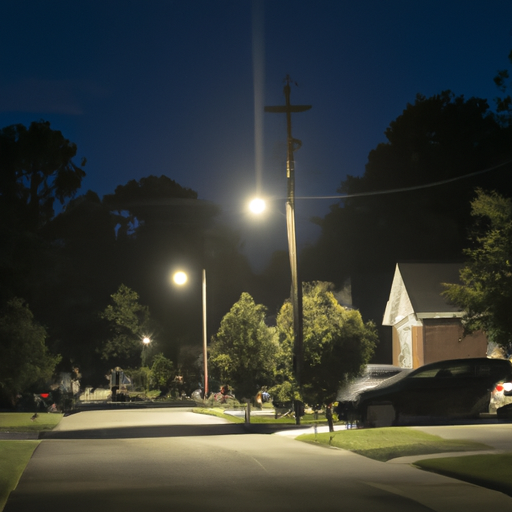
Accessible Recreation and Entertainment Options in Austin
As seniors and people with disabilities, finding accessible recreation and entertainment options can be a challenge. In Austin, Texas, however, there are plenty of amenities and services to accommodate all levels of accessibility. From art galleries to movie theaters, Austin has it all.
The Austin Museum of Art has been an accessible destination for those with disabilities for years. They have a variety of programs and services for visitors, including wheelchair ramps, accessible restrooms, and sign language interpreters. They also have an art-making program for those who are visually impaired.
The Alamo Drafthouse is another great option for accessible entertainment in Austin. Not only do they offer wheelchair accessibility, but they also have specialized screenings for individuals who are deaf or hard of hearing. They are also one of the few movie theaters in the area with open captioning.
The Austin Parks and Recreation Department also offers a variety of accessible recreation options. They have wheelchair-friendly playgrounds, fishing piers, and picnic areas. The City of Austin also runs the Adapted Recreation Program, which offers specialized activities for those with disabilities. From adaptive sports to theater performances, there is something for everyone.
Austin is also home to a number of accessible shopping centers. The Domain and the Arboretum are both wheelchair-friendly and feature ramps, wheelchair-friendly restrooms, and accessible parking. They also have several dining options for those with special dietary needs.
There are also several accessible entertainment venues in Austin. The Stateside Ampitheater offers seating for people with disabilities and offers open captioning for their concerts. The Long Center for the Performing Arts has wheelchair and companion seating as well as audio amplification equipment.
Finally, Austin is home to a number of accessible parks and outdoor recreational areas. Zilker Park, Lady Bird Lake, and McKinney Falls State Park all have wheelchair-accessible trails and facilities. With a wide variety of recreational activities available, these parks are an ideal destination for seniors and people with disabilities.
In Austin, Texas, there is a wealth of accessible recreation and entertainment options for those with disabilities. From art galleries to movie theaters, there is something for everyone. With a wide range of amenities and services, Austin is the perfect place for seniors and people with disabilities to explore and enjoy.

Transportation Options for Seniors and People with Disabilities
Transportation can be a major concern for seniors and people with disabilities when searching for a new home. Finding the most accessible neighborhoods in Austin can be a daunting task, especially when considering the availability of public transportation options. Fortunately, Austin provides a variety of transportation options to meet the needs of seniors and people with disabilities.
One of the most popular transportation options for seniors and people with disabilities in Austin is the MetroAccess program. The MetroAccess program provides door-to-door transportation services for those individuals who are unable to use the regular bus system. The program is available 24/7 and can be used to travel to various locations throughout Austin. Additionally, the program offers reduced fares for seniors and people with disabilities.
For those who are able to use the regular bus system, Austin also offers a variety of services. The city operates a public transportation system that includes both bus and rail services. The bus system provides a number of routes throughout the city and can be used to travel to various destinations. The rail system, known as Capital MetroRail, provides a convenient way to travel to and from downtown Austin. It includes seven different lines that cover the entire city.
In addition to public transportation options, Austin also offers a variety of private transportation services that are specifically catered towards seniors and people with disabilities. These services range from taxi companies to specialized transportation services. The city also provides a number of para-transit services that are designed to meet the needs of those individuals who cannot access regular bus services.
In addition to transportation options, Austin also offers an array of accessible services and amenities to make life easier for seniors and people with disabilities. The city has a variety of accessible restaurants, entertainment venues, and shopping centers that are located in accessible neighborhoods. Additionally, Austin is home to a number of resources and organizations that are specifically designed to assist seniors and people with disabilities.
Overall, Austin is a great city for seniors and people with disabilities. With a variety of transportation options and accessible services and amenities, the city is an ideal location for those individuals who want to live an independent and fulfilling lifestyle. With the right resources and support, seniors and people with disabilities can find an accessible and welcoming home in Austin.

Accessibility Resources and Support Services in Austin
Seniors and people with disabilities in the Austin area have a variety of accessibility resources and support services available to them. From accessible housing options to special transportation services, the city of Austin is committed to creating a livable environment for all its citizens.
One of the most important accessibility resources for seniors and people with disabilities is housing. Austin has a number of accessible housing options, from apartments and condos to homes that have been specially designed with accessibility features like wider doorways and non-slip surfaces. Many of these properties are located in neighborhoods that are close to public transportation and other amenities.
But housing isn’t the only accessibility resource available in Austin. The city also offers a number of public transportation services specifically designed for seniors and people with disabilities. These include wheelchair-accessible buses, curb-to-curb van services, and rail services. There are also accessible taxi services available, as well as paratransit services operated by the city.
Another important accessibility resource in Austin is the city’s network of support services. The city’s Office of Disabilities Services provides a range of services to help seniors and people with disabilities live independently. These services include job placement, employment counseling, and help with housing and transportation. The city also has a number of organizations that provide recreation and leisure activities for seniors and people with disabilities, such as the Austin Senior Activity Center and the Austin Independent Living Center.
Finally, Austin is home to a number of organizations dedicated to advocating for the rights of seniors and people with disabilities. These organizations include the Texas Council for Developmental Disabilities, the American Association of People with Disabilities, and the Austin Center for Independent Living. They serve as a valuable resource for individuals and families seeking information on accessibility, disability rights, and other important issues.
For seniors and people with disabilities, Austin is an ideal place to live. With its wide range of accessibility resources and support services, it is possible to find housing, transportation, and recreational activities that are accessible and enjoyable. With the right resources and support, seniors and people with disabilities can make the most of living in Austin.

Health Care and Social Services in Austin
Austin is a city that has become increasingly aware of the needs of seniors and people with disabilities, and many of its neighborhoods are particularly accessible for those with special needs. Health care and social services in Austin are top-notch, with a variety of options for seniors and people with disabilities. The city is home to a wide range of medical facilities, including the Seton Medical Center, the University of Texas Medical Branch, and the Dell Medical School, as well as a number of specialized clinics and care centers. The city also has many community-based health care providers and social services that are available to those in need.
For seniors and people with disabilities, Austin offers many convenient and accessible transportation options. The Capital Metro bus system is wheelchair-accessible, and the city also has a number of accessible taxis, car services, and ride-sharing options. In addition, the city has several wheelchair-accessible trails and paths, making it easy for those with mobility issues to get around.
Austin also offers a variety of recreational and cultural opportunities for seniors and people with disabilities. The city has a thriving arts scene, with numerous art galleries, museums, and performing arts venues, many of which are wheelchair-accessible. The city is also home to numerous parks and public spaces, some of which have been designed with accessibility in mind.
In addition to its excellent health care and social services, Austin is home to a number of organizations and initiatives that offer support and resources for seniors and people with disabilities. The city has a number of disability rights organizations, advocacy groups, and disability-related services and supports. The city also has a number of disability-focused recreational and educational programs, such as the Austin Senior Center and the Austin Community College Disability Services Department.
Finally, Austin is home to a variety of organizations that focus on providing housing and other resources for those with special needs. The city has a number of specialized housing options for people with disabilities, as well as a variety of housing programs and services for seniors. In addition, the city has a number of programs aimed at helping those with disabilities to find employment.
Overall, Austin is an incredibly accessible city for seniors and people with disabilities. Its excellent health care and social services, accessible transportation, recreational and cultural opportunities, and supportive organizations and initiatives make it a great place to live for those with special needs.
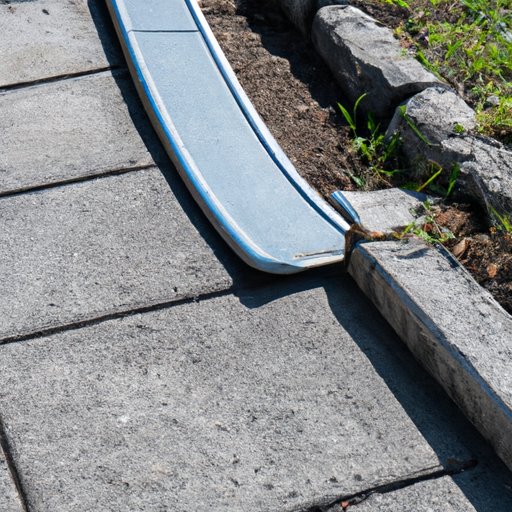
Accessible Housing Options in Austin
When it comes to finding accessible housing options in Austin, seniors and people with disabilities can rest assured that the city is full of wonderful neighborhoods that offer a variety of features to make life easier. From safe sidewalks and wide streets to unique housing options and accessible public transportation, Austin has something for everyone.
One of the most accessible neighborhoods in Austin is South Congress, located just south of downtown. South Congress is filled with walkable streets, wide sidewalks, and plenty of accessible public transportation. The neighborhood also has several accessible housing options, such as the Wright House, a three-story apartment complex that provides accessible units for seniors and people with disabilities. The Wright House also offers amenities such as an outdoor pool, a fitness center, and a community garden.
For those looking for a more independent living option, Hyde Park is a great option. Located just north of downtown, Hyde Park is filled with accessible housing options, including single-family homes, condos, and apartments. A few of the neighborhood’s unique features include wide sidewalks, wheelchair-accessible paths, and safe streets. Hyde Park is also home to several restaurants, shops, and entertainment venues that are accessible to people with disabilities.
Another great neighborhood for accessible housing is the University of Texas at Austin. The university offers accessible housing options for students with disabilities, including accessible apartments, dorms, and single-family residences. And with its wide sidewalks, wheelchair-accessible paths, and plenty of accessible public transportation, the university is a great choice for seniors and people with disabilities looking for a safe and comfortable living environment.
For those looking for a more rural living experience, the city of Dripping Springs is a great option. Located just west of Austin, Dripping Springs offers a variety of accessible housing options, including single-family homes, condos, and apartments. The city also has an accessible bus system, wheelchair-accessible paths, and plenty of sidewalks for walking.
Of course, no matter what neighborhood you choose, it’s important to remember that Austin is a city that is dedicated to making life easier for seniors and people with disabilities. From accessible housing options to safe streets and wide sidewalks, Austin is a great place to call home. So, if you’re looking for a city that offers plenty of accessible options, Austin is the perfect place to call home.



